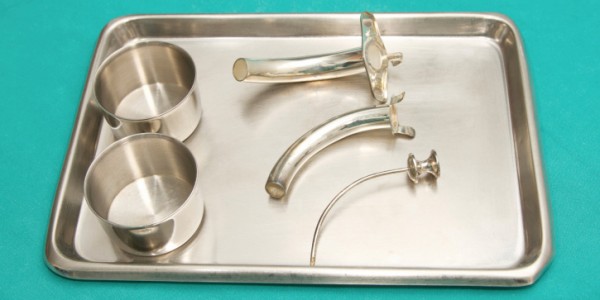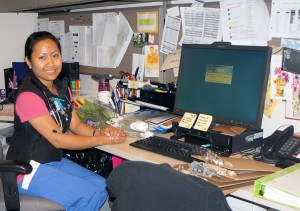Breathing a little easier
Having a tracheostomy (trach) can be a painful, difficult experience for patients and their families. They will need a team of health care professionals to help manage and care for this this breathing tube coming out of your throat. To ensure a smooth transition to their home and a seamless continuum of care, VCH acute care and community care staff are working together with a new standard operating procedure (SOP) for trach discharges to help them out.
A year before the SOP was developed, Jenifer Tabamo, a nurse clinician working in the Acude Medical Unit at Vancouver General Hospital, had a newly trached patient whose wish was to go home and be with his family.
“It was a difficult process because we had no standard system in place,” she says. “We experienced the challenges of how to safely discharge a patient with a trach – we didn’t know what kinds of supports we had in the community, we didn’t know how to deliver the education to the patient and the family.”
Because of her experiences, Jenifer joined the working group that developed the needed SOP, a mix of acute and community care staff who treat people with trachs.
One of the home health professionals who worked with Jennifer on the SOP was Marvin Wesenberg, a respiratory therapist from the Pender Community Health Centre.
“The SOP prompts health professionals in acute care, to contact home health earlier on, instead of the day of discharge,” Marvin explains. “This improves communication so that everyone will be aware of, and ready for the discharge without delay.”
Marvin says there are huge benefits for both him and the patient.
“The biggest benefit is that patients and family members will have all the necessary medical supplies and knowledge to take care of the tracheostomy – this ensures that they will be discharged safely and without adding anxiety and stress,” he says. “Before, there were times when I visited patients at home and we had to deal with a crisis situation – it can take several days to get the needed supplies. This SOP allows adequate time for preparation.”
“Because patients and staff are better prepared, it is less likely they’ll run into problems and end up in the emergency room,” Marvin continues.
Susan Seeman, director of Strategic Initiatives says this proactive work is a great example of acute and community care working together for the good of the patient.
“It’s wonderful to see this happening,” Susan says. “It really shows how the patient benefits when we have acute and community staff collaborating and working together – it’s a great partnership.”



